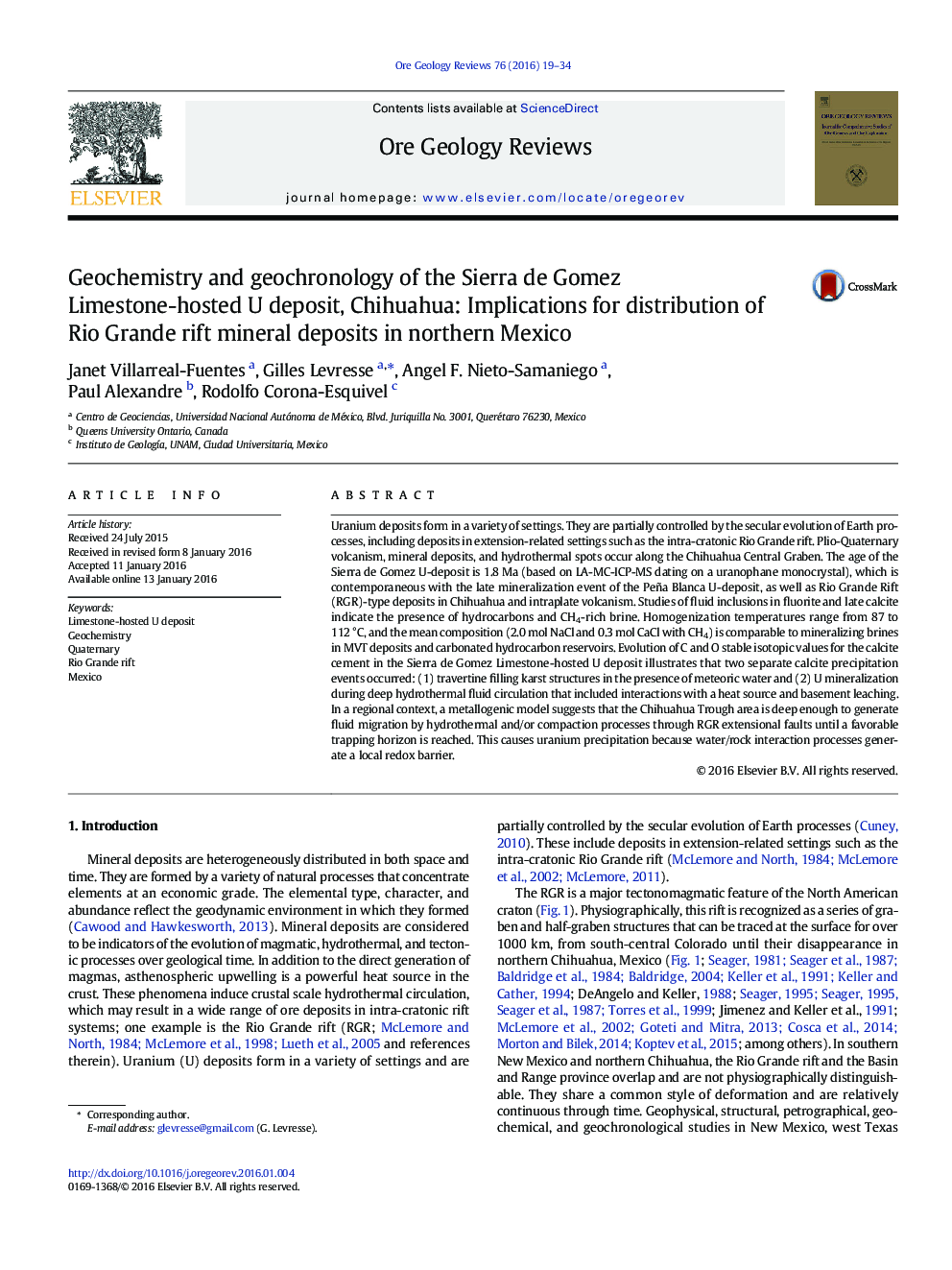| Article ID | Journal | Published Year | Pages | File Type |
|---|---|---|---|---|
| 4697062 | Ore Geology Reviews | 2016 | 16 Pages |
•We present geochronological and detailed geochemical data of the first Pliocene U-limestone deposits recognized in Mexico.•Petrography, C-O isotopes and fluid inclusions results allow unraveling a coherent genetic model for this unusual deposit.•we present a review of the Plio-Quaternary extension in Chihuahua•We discuss the relationship of the Central Chihuahua Graben with the Rio Grande rift•The evolution and geometry of the Rio Grande rift seems to exert a great control on the U-mineral deposits distribution.
Uranium deposits form in a variety of settings. They are partially controlled by the secular evolution of Earth processes, including deposits in extension-related settings such as the intra-cratonic Rio Grande rift. Plio-Quaternary volcanism, mineral deposits, and hydrothermal spots occur along the Chihuahua Central Graben. The age of the Sierra de Gomez U-deposit is 1.8 Ma (based on LA-MC-ICP-MS dating on a uranophane monocrystal), which is contemporaneous with the late mineralization event of the Peña Blanca U-deposit, as well as Rio Grande Rift (RGR)-type deposits in Chihuahua and intraplate volcanism. Studies of fluid inclusions in fluorite and late calcite indicate the presence of hydrocarbons and CH4-rich brine. Homogenization temperatures range from 87 to 112 °C, and the mean composition (2.0 mol NaCl and 0.3 mol CaCl with CH4) is comparable to mineralizing brines in MVT deposits and carbonated hydrocarbon reservoirs. Evolution of C and O stable isotopic values for the calcite cement in the Sierra de Gomez Limestone-hosted U deposit illustrates that two separate calcite precipitation events occurred: (1) travertine filling karst structures in the presence of meteoric water and (2) U mineralization during deep hydrothermal fluid circulation that included interactions with a heat source and basement leaching. In a regional context, a metallogenic model suggests that the Chihuahua Trough area is deep enough to generate fluid migration by hydrothermal and/or compaction processes through RGR extensional faults until a favorable trapping horizon is reached. This causes uranium precipitation because water/rock interaction processes generate a local redox barrier.
Graphical abstractFigure optionsDownload full-size imageDownload as PowerPoint slide
